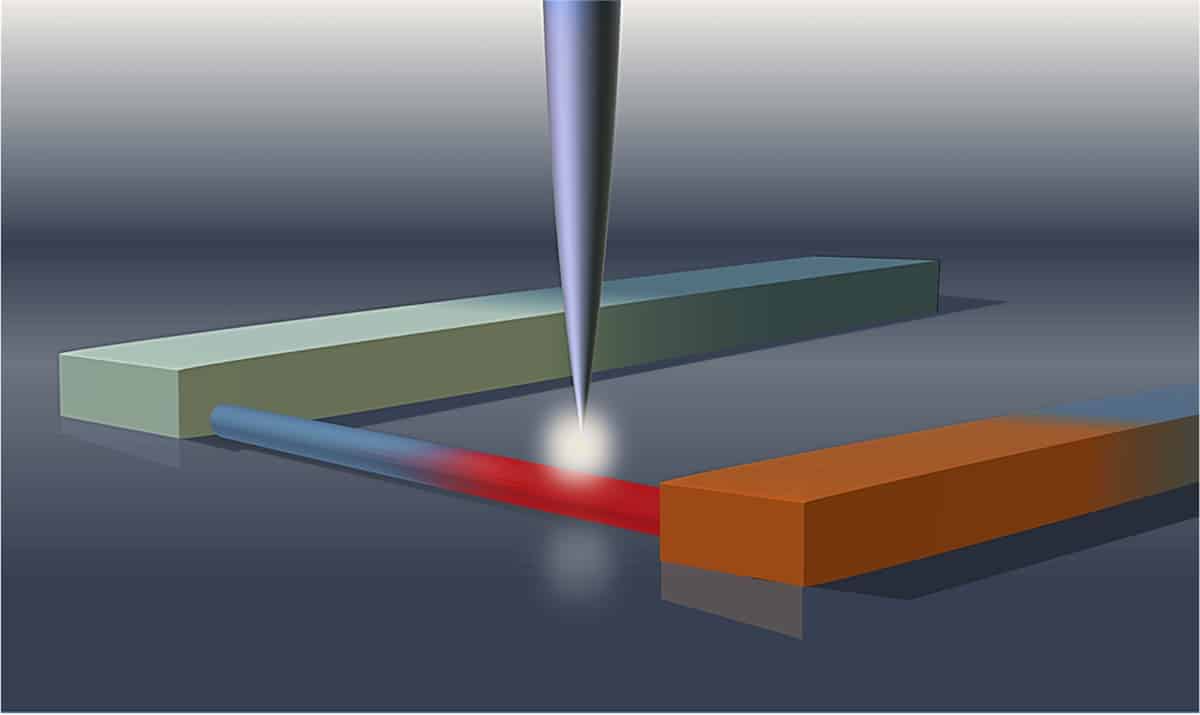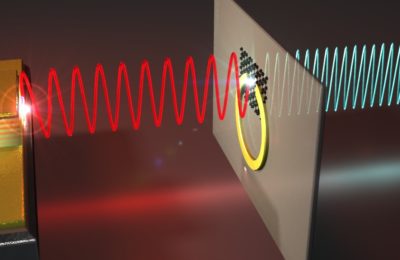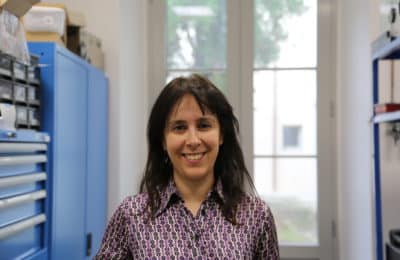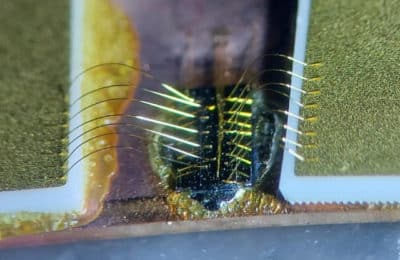In a new paper published in Light Science & Application, a team of scientists, led by Miriam Serena Vitiello from CNR – Istituto Nanoscienze and Scuola Normale Superiore, and co-workers have developed an elegant approach that exploits scattering near-field optical nanoscopy to unambiguously reveal the photodetection mechanism in semiconductor (InAs) nanowire FETs.
By innovatively exploiting nanoscopy of the photoinduced current in the nanostructure, and scattering near-field microscopy, in a compact and simple configuration that does not make use of any external detector, with a semiconductor-heterostructure miniaturized laser emitting at THz frequencies (one million of million of oscillations per second), researchers spatially resolved the light-induced electric response of the nanowire with sub-diffraction spatial resolution, demonstrating the possibility to induce photo-thermoelectric or bolometric detection of light.
“Remarkably, we reveal how the spatial distribution of photocurrents, at the nanoscale, and its dependence on a number of possible control knobs (applied fields and excitation fluence) allow to clearly discriminate the different photodetection processes that can come into play.” says Vitiello. “Our elegant approach provides a route for engineering THz nanoscale detectors with large quantum efficiencies, low dark currents and high speeds.”
The presented technique can be easily extended to any other nanostructured light sensor, offering unique advantages for an ad hoc quantum design of high performance sensing systems. This breakthrough could open new research opportunities in many application domains: real-time pulsed imaging and time of flight tomography; time-resolved THz spectroscopy of gases, complex molecules and cold samples, coherent control of quantum systems; quantum optics, where high-power pulses can drive molecular samples out of equilibrium, and ultrafast detectors can capture such an effect; metrology; ultra-high-speed communications where THz frequency carriers will become increasingly more important in the quest for higher bandwidth data communications, and, finally, can promise extraordinary impacts on the market for biomedical imaging, security and process control.
Unveiling the detection dynamics of semiconductor nanowire photodetectors by terahertz near-field nanoscopy, Eva A. A. Pogna, Mahdi Asgari, Valentina Zannier, Lucia Sorba, Leonardo Viti & Miriam S. Vitiello, Light: Science & Applications volume 9, Article number: 189 (2020)



